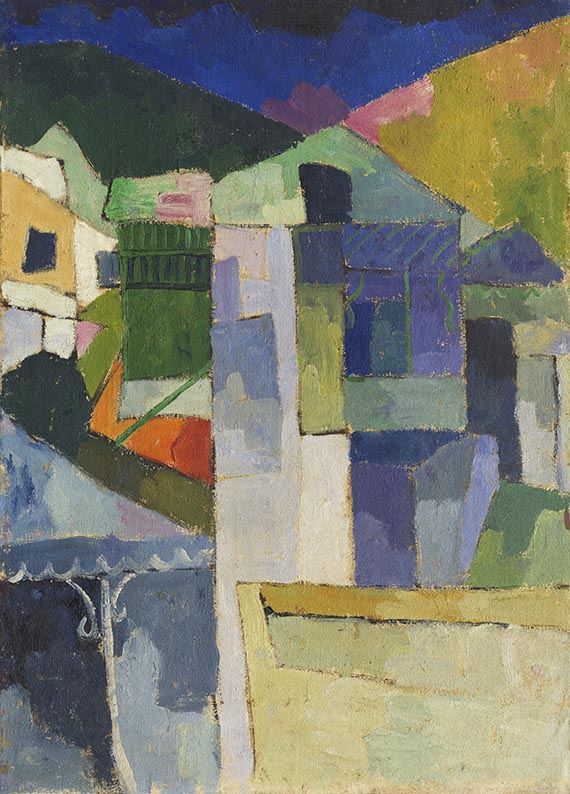Dictionary


Rococo and Late Baroque in St. Roman Empire of the German Nation
French rococo spread quickly throughout Europe, and by circa 1730, it had reached the Germanic territories of the Holy Roman Empire, where it was well received, and curbed the influence of Italian art in the region. Rococo was not merely imitated by native artists, but was the catalyst for a creative, and unique style. Architects designed grand staircases with a new, theatrical character (Brühl, Würzburg, Bruchsal). Johann Balthasar Neumann and Johann Lucas von Hildebrand from Austria were key exponents of late baroque architecture in the old empire. Former court dwarf, François de Cuvilliés the Elder, (1695-1768), played an important role in the appropriation of French ornament in the area, as well as the development of architecture there. Other key figures of the period included the Asam brothers, Cosmas Damian (1686-1739) and Egid Quirin (1692-1750), who worked in various mediums. Painting in the Catholic areas of the Holy Roman Empire was monumental, and consisted primarily of wall and ceiling frescoes and large-format altar paintings. Artists such as Ricci, Tiepolo, and Amigoni introduced Italian (particularly Venetian) influences, which were more popular than French art in Southern parts of the Empire. Key painters included Paul Troger (1698-1762) and Daniel Gran, who were influenced by Italian art (Solimena). The former was particularly influential and his students included Johann Jakob Zeiller, Martin Knoller, and more prominently, the ecstatic-visionary, Franz Anton Maulpertsch (or Maulbertsch, 1724-96). Like Christian Wink, Maulpertsch was a master of oil painting, an art form that became highly collectable during the rococo period. Johann Georg Bergmüller from Augsburg was an exponent of the ornamental style of his hometown, and taught Johann Evangelist Holzer and Gottfried Bernhard Götz. Famous portrait painters of the period included the French masters and Johann Kupecký, who had a lively style, as well as Martin van Meytens and George Desmarées from Sweden. Anton Graff was the leading painter of the late 18th century. Religious subjects dominated sculpture, particularly in the Southern areas of the old empire. Georg Raphael Donner and Balthasar Permoser’s were important figures of the late baroque period, whilst the younger masters Joseph Anton Feuchtmayer, Ignaz Günther (1725-75) and Johann Baptist Straub executed sensual, lively, rococo works.
French rococo spread quickly throughout Europe, and by circa 1730, it had reached the Germanic territories of the Holy Roman Empire, where it was well received, and curbed the influence of Italian art in the region. Rococo was not merely imitated by native artists, but was the catalyst for a creative, and unique style. Architects designed grand staircases with a new, theatrical character (Brühl, Würzburg, Bruchsal). Johann Balthasar Neumann and Johann Lucas von Hildebrand from Austria were key exponents of late baroque architecture in the old empire. Former court dwarf, François de Cuvilliés the Elder, (1695-1768), played an important role in the appropriation of French ornament in the area, as well as the development of architecture there. Other key figures of the period included the Asam brothers, Cosmas Damian (1686-1739) and Egid Quirin (1692-1750), who worked in various mediums. Painting in the Catholic areas of the Holy Roman Empire was monumental, and consisted primarily of wall and ceiling frescoes and large-format altar paintings. Artists such as Ricci, Tiepolo, and Amigoni introduced Italian (particularly Venetian) influences, which were more popular than French art in Southern parts of the Empire. Key painters included Paul Troger (1698-1762) and Daniel Gran, who were influenced by Italian art (Solimena). The former was particularly influential and his students included Johann Jakob Zeiller, Martin Knoller, and more prominently, the ecstatic-visionary, Franz Anton Maulpertsch (or Maulbertsch, 1724-96). Like Christian Wink, Maulpertsch was a master of oil painting, an art form that became highly collectable during the rococo period. Johann Georg Bergmüller from Augsburg was an exponent of the ornamental style of his hometown, and taught Johann Evangelist Holzer and Gottfried Bernhard Götz. Famous portrait painters of the period included the French masters and Johann Kupecký, who had a lively style, as well as Martin van Meytens and George Desmarées from Sweden. Anton Graff was the leading painter of the late 18th century. Religious subjects dominated sculpture, particularly in the Southern areas of the old empire. Georg Raphael Donner and Balthasar Permoser’s were important figures of the late baroque period, whilst the younger masters Joseph Anton Feuchtmayer, Ignaz Günther (1725-75) and Johann Baptist Straub executed sensual, lively, rococo works.
Offers
Headquarters
Joseph-Wild-Str. 18
81829 Munich
Phone: +49 89 55 244-0
Fax: +49 89 55 244-177
info@kettererkunst.de
Louisa von Saucken / Undine Schleifer
Holstenwall 5
20355 Hamburg
Phone: +49 40 37 49 61-0
Fax: +49 40 37 49 61-66
infohamburg@kettererkunst.de
Dr. Simone Wiechers / Nane Schlage
Fasanenstr. 70
10719 Berlin
Phone: +49 30 88 67 53-63
Fax: +49 30 88 67 56-43
infoberlin@kettererkunst.de
Cordula Lichtenberg
Gertrudenstraße 24-28
50667 Cologne
Phone: +49 221 510 908-15
infokoeln@kettererkunst.de
Hessen
Rhineland-Palatinate
Miriam Heß
Phone: +49 62 21 58 80-038
Fax: +49 62 21 58 80-595
infoheidelberg@kettererkunst.de
We will inform you in time.




